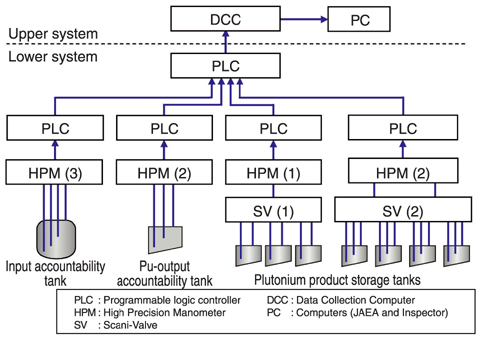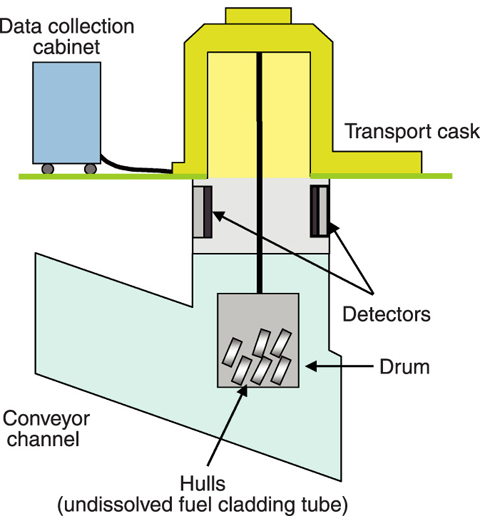
Fig.8-5 Outline diagram of solution measurement and monitoring system

Fig.8-6 O utline diagram of Hull measurement and monitoring system
Tokai Reprocessing Plant (TRP) has actively cooperated with the implementation of safeguards (SG) by Japan and IAEA, and has also actively engaged in the development of technology for the strengthening and the efficiency of these safeguards.
In past activities, the inspector of the plant requested that an "SG Improvement Plan" be drawn up for the strengthening and efficiency of the IAEA's SG. The improvement plan consisted of four areas and ten tasks. TRP engaged in implementation of each item after repeated discussions with the inspector. This resulted in improvements of the weak points of SG for TRP and efficiency in inspection. The current SG system instituted following the "SG improvement plan" is a platform for introducing integrated safeguards including short notice random inspections of TRP in the future.
(1) Improvement of system for verification of facility design information
All the facilities covered by the IAEA's SG provide answers to the Design Information Questionnaire (DIQ) to IAEA. The DIQ elicits very important information, and the inspector develops the SG approach for a facility on the basis of the DIQ. TRP contributes to the smooth implementation of IAEA's SG by providing the process diagram and detailed drawings of the primary tank, and information such as Pu amount and its distribution in the process, the operational method of each process, and measurement methods.
Additionally, the procedure for verifying the design information continuously was established based on the discussions with the inspector. The guarantee of the validity of the facility's declarations is strengthened because the procedure enables the IAEA to verify the absence of undeclared design change by which nuclear material (NM) could be diverted.
(2) Improvement of reliability of verification for primary tank on SG
TRP developed the Solution Measurement and Monitoring System by addition of a tamper detection function and function for authentication thereof by the inspector, and addition of an important tank, input accountability tank, on SG to the existing system that measures the solution level of the tanks in which an important Pu product is measured or stored (Fig.8-5). The system enables inspectors to measure the level of Pu solution independently and to detect the absence of fraudulent solution changes. Also, the transparency of the handling of the Pu solution was further improved.
(3) Establishment of waste verification method
TRP developed an unattended non-destructive assay system in cooperation with Los Alamos National Laboratory in order to measure a slight amount of NM associated with fuel cladding tube (Hulls) remaining after spent fuel is dissolved (Fig.8-6). The system enables quantity inspection for waste and verification that the hulls are one of the causes of Shipper Receiver Difference (SRD: difference in the amounts of NM in the reactor and at TRP). The efficiency of inspection is also improved using a system that is unattended.
(4) Improvement of NM accountancy
TRP has engaged in methods to investigate the cause of SRD, and SRD has been decreased by reevaluation of nuclear loss (Decrease of Pu by radioactive decay) of the spent fuel, establishment of the analytical method to detect a slight amount of NM contained in the undissolved residuals in the high active liquid waste, etc. Accurate accountancy control was developed through this improvement.
<Previous: 8-1 | Next: 9 Development of Technology on Nuclear Cycle Backend >